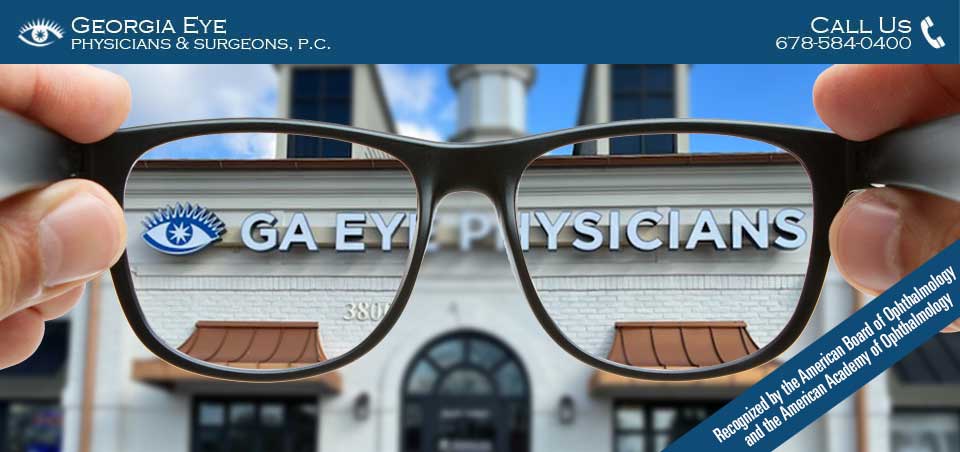Treating Pterygium, Pinguecula, & Other Eye Growths
At Georgia Eye Physicians and Surgeons, we offer many specialized eye surgeries to improve your eye conditions. While some procedures improve more non-threatening eye conditions such as nearsightedness and farsightedness, others are used to remove more persistent conditions with potential to dramatically interfere with vision. Included in this category are pterygium and pinguecula, which can be surgically removed when necessary by board-certified ophthalmologist Dr. William Segal.
Both pterygium and pinguecula are thought to be caused by dry eye and environmental factors such as wind, dust, and ultraviolet light (UV). Additionally, these benign eye growths share many symptoms, including blurred vision, irritation, dryness, itching, grittiness, and burning. During the growth of a pterygium, redness or inflammation occurs. You also may have an undesirable feeling as if there is something stuck in your eye (foreign body sensation), with an unceasing urge to remove it.
While the two conditions share many characteristics, they differ in appearance. Pterygium appears as fleshy tissue on the conjunctiva that extends over the cornea. While some pterygium growths remain small, they can potentially grow large enough to interfere with vision. Pinguecula is likened to a callus on the skin recognized as simply a change in normal tissue that results in a deposit of protein, fat or calcium. It grows as a yellowish patch or bump on the conjunctiva, or the thin, filmy membrane covering the whites of the eye. Often, it appears on the portion of the eye closest to the nose.
Vision correction and treatment takes on many forms depending on your specific eye condition. With the conditions of pterygium and pinguecula, treatment is not always necessary. Suffering patients whose condition worsens to become red and irritated can use prescribed eye drops and ointments to reduce inflammation. If conditions continue to degenerate, surgery may be necessary to remove large, sight-threatening growths. This type of eye surgery consists of removing the growth and replacing it with a graft of tissue.
While surgery or medications may be prescribed to prevent recurrences of pterygium and pinguecula, the best way to prevent these conditions is by wearing protective eyewear and applying artificial tears in sunlight and in dry, dusty conditions. For more information or if you are suffering from pterygium or pinguecula, we encourage you to call our office to schedule an appointment. For more information on eye conditions that may be affecting you, be sure to follow Georgia Eye Physicians and Surgeons on Facebook, Twitter, and Google+.













